The majority of the colour images in the book are in black and white. Here they are in colour.
Part II
Portrait of the Computer as an Artist
DeepDream: How Alexander Mordvintsev Excavated the Computer’s Hidden Layers

Mordvintsev’s reference image of a cat and a beagle, 2015.
(Courtesy of Alexander Mordvintsev, 2015.)
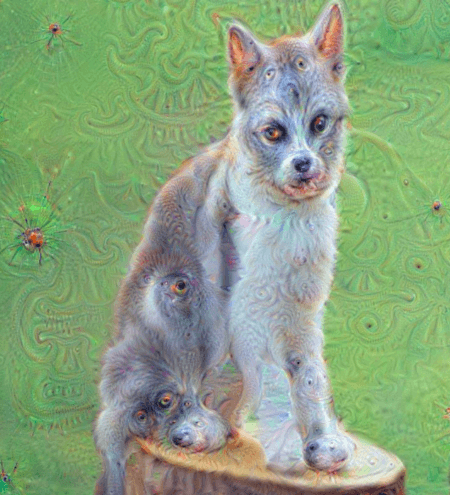
Alexander Mordvintsev, nightmare beast created using DeepDream, 2015.
(Courtesy of Alexander Mordvintsev, 2015.)
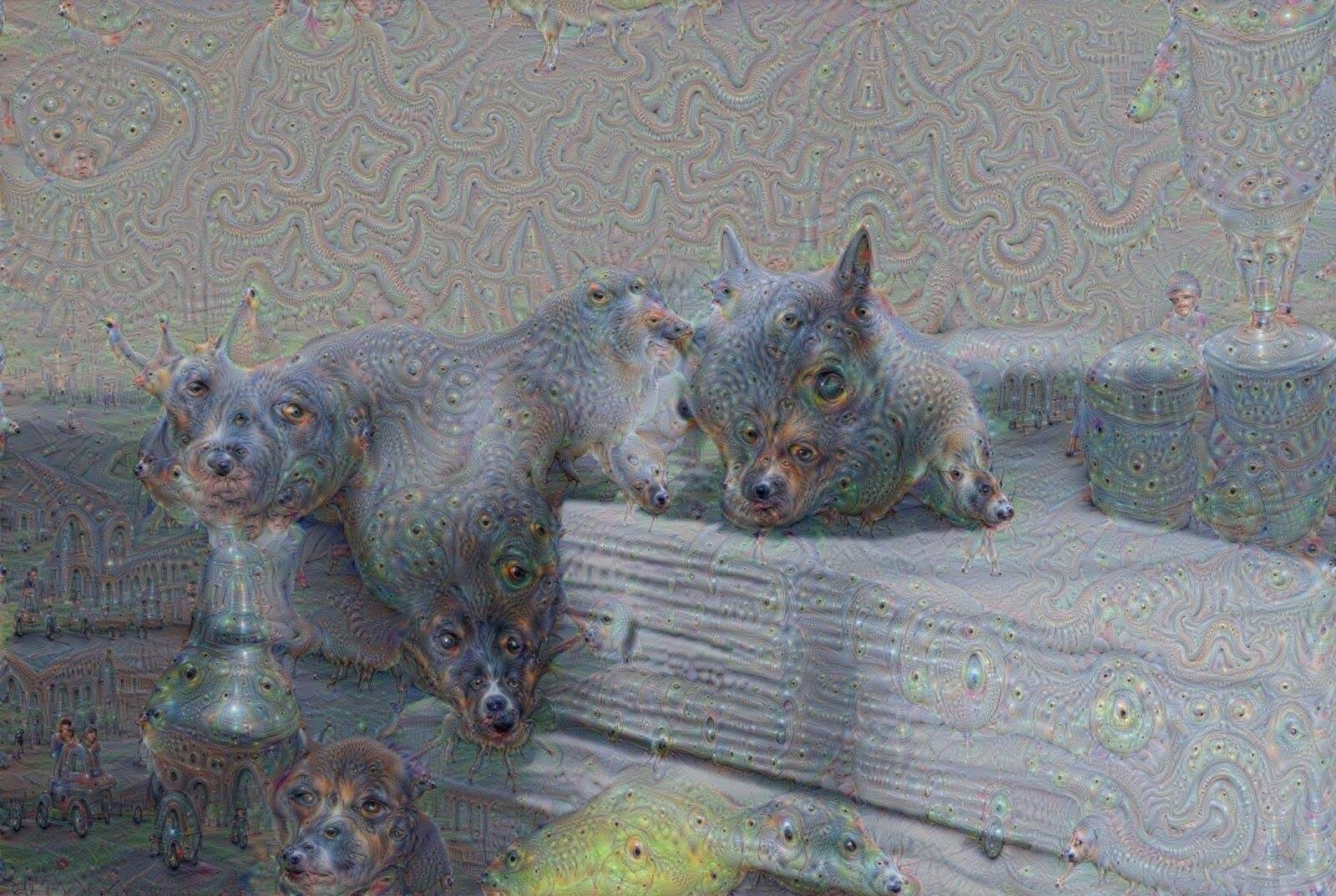
“Dogslug cum puppyslug,” created using DeepDream, 2015. (Courtesy of Alexander Mordvintsev, 2015.)
Mike Tyka Takes the Dream Deeper
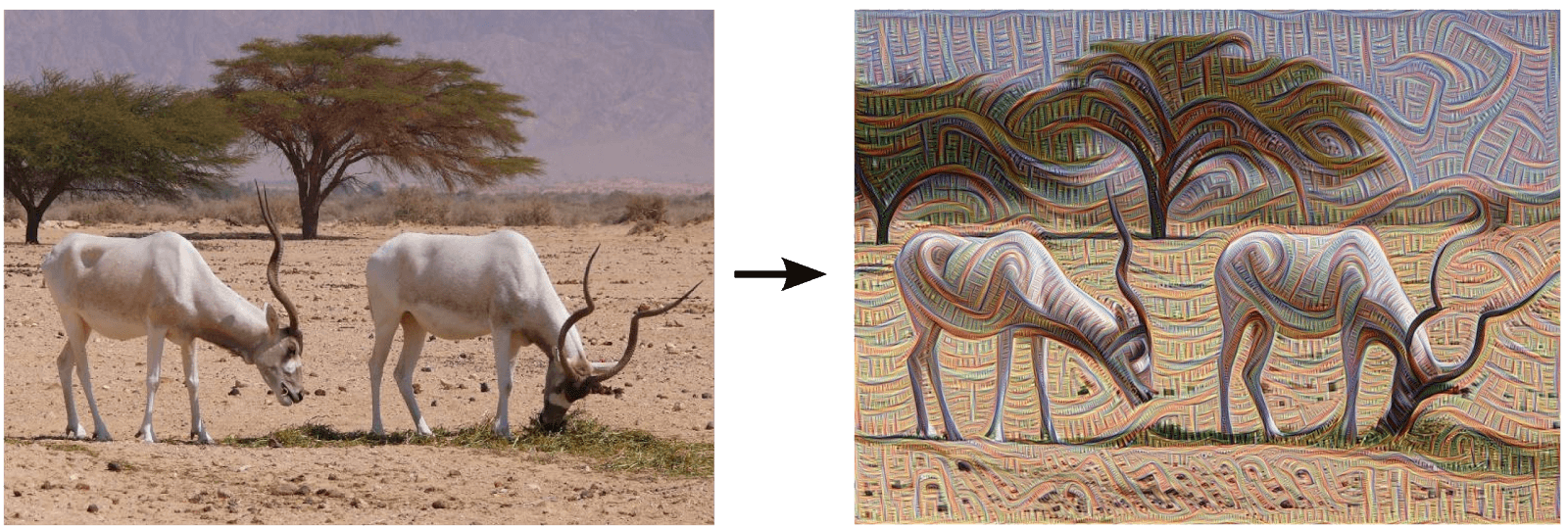
Two ibises— the original photograph (left) and as “seen” by a machine, 2015 (right). (Photograph on the left is courtesy of Dr. Zachi Evenor. The processed image on the right is courtesy of software engineer Guenther Noack, 2015, and is published by Google under Attribution 4.0 International (CC BY 4.0).)

Picture of clouds before (left) and after (right) being transformed by DeepDream, 2015. (Courtesy of Alexander Mordvintsev, Mike Tyka, Chris Olah, and Google. The entire image is in Mordvintsev, Alexander, Mike Tyka, and Christopher Olah. 2015. “Inceptionism: Going Deeper into Neural Networks.” Google AI Blog, June 17.
Memo Akten Educates a Neural Network
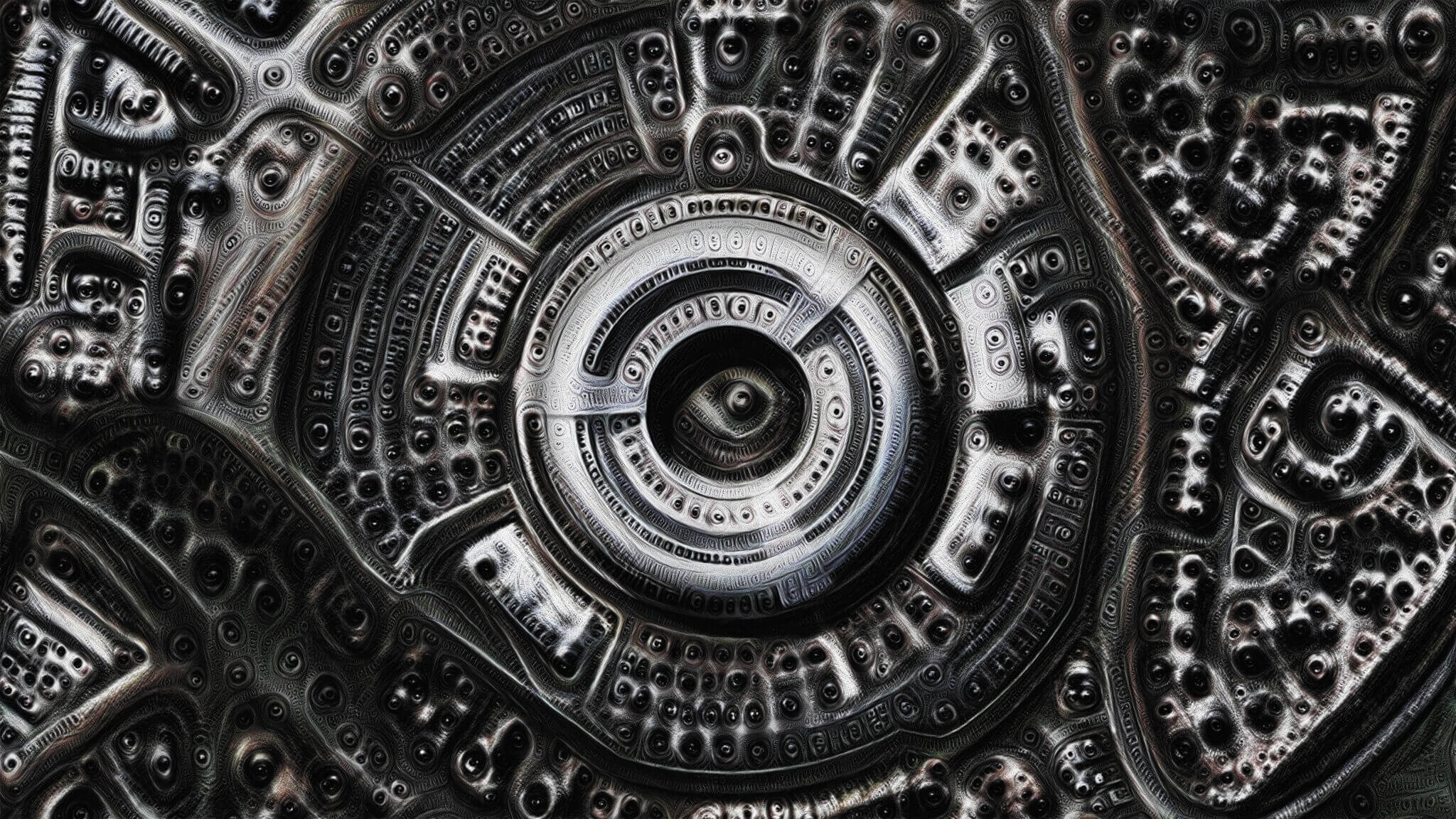
All Watched Over by Machines of Loving Grace: DeepDream Edition, 2015.
(All watched over by machines of loving grace: Deepdream Edition. Courtesy of Memo Akten, 2015.)
Angelo Semeraro’s Recognition: Intertwining Past and Present
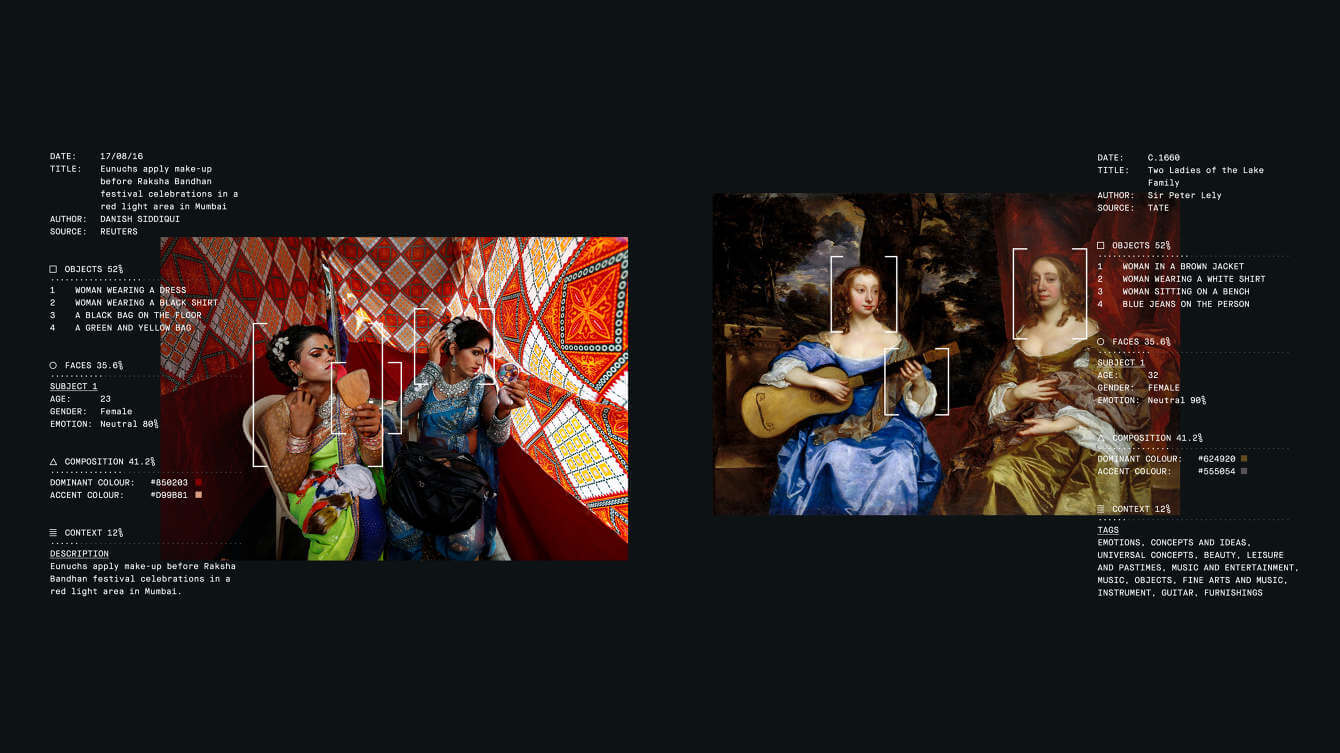
A pairing by Recognition of a 2016 photograph with a painting from 1660, 2017.
(Artist: Angelo Semeraro. Courtesy of Reuters/Danish Siddiqui and Tate, 2017.)
Leon Gatys’s Style Transfer: Photography “In the Style Of”
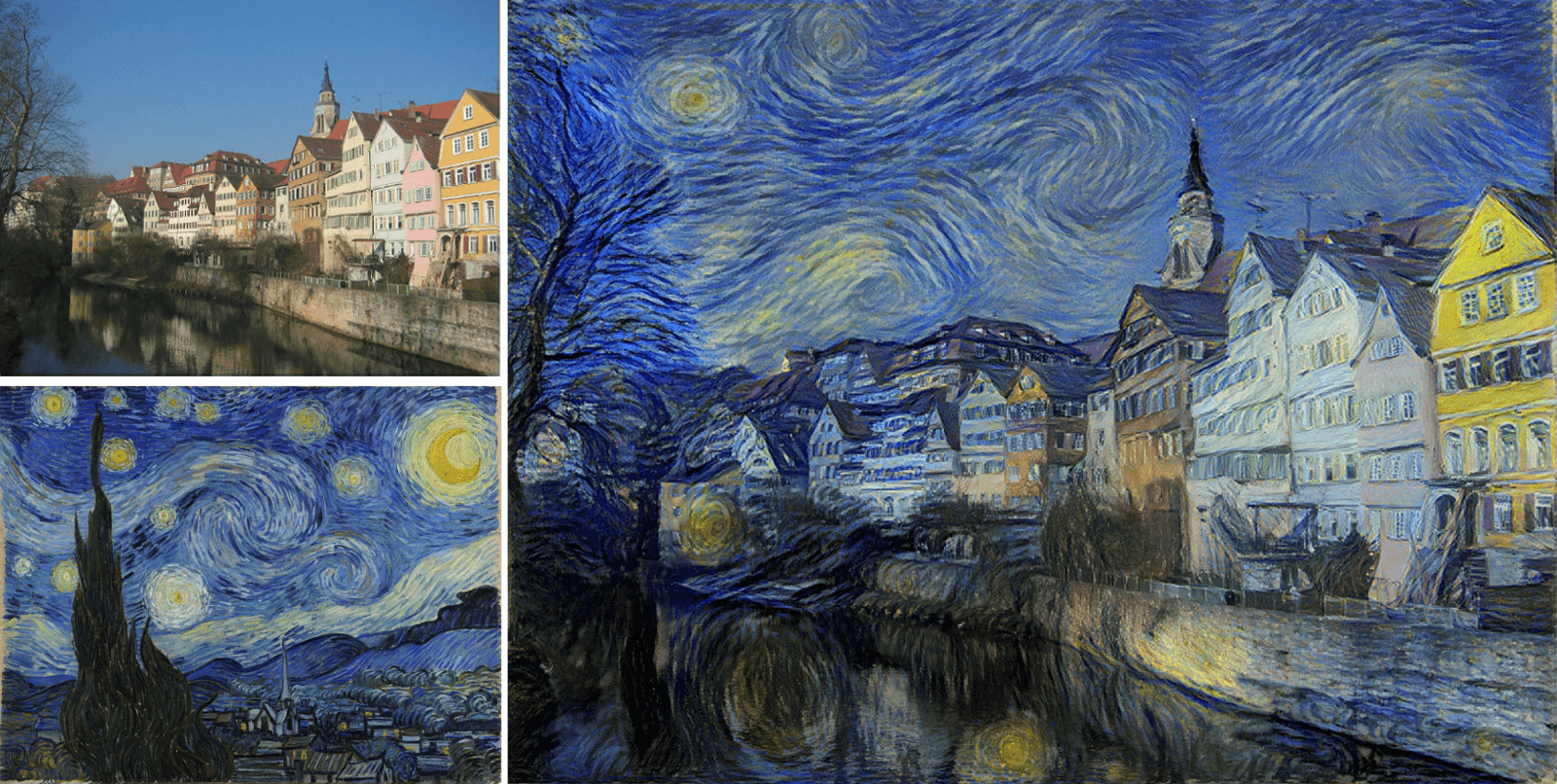
The content image, a photograph of the Neckarfront at Tübingen (upper left). The style image, van Gogh’s The Starry Night (lower left). The image on the right results from combining the style and content images to make The Neckarfront at Tübingen according to van Gogh, as van Gogh might have painted it.
(Image on right courtesy of Leon Gatys, 2015. Photograph upper left courtesy of Andreas Praefcke, 2003. Van Gogh’s The Starry Night, bottom left, from Wikimedia Commons. Artist: Vincent Van Gogh (1853– 1890). The Starry Night. Oil on canvas, 73 × 92 cm, 28¾ × 36¼ in. Source/Photographer: Downloaded from Houston tourism website around painting’s time in Houston’s Museum of Fine Arts (September 21, 2003– January 4, 2004). Can no longer find website.)
Mike Tyka’s Portraits of Imaginary People
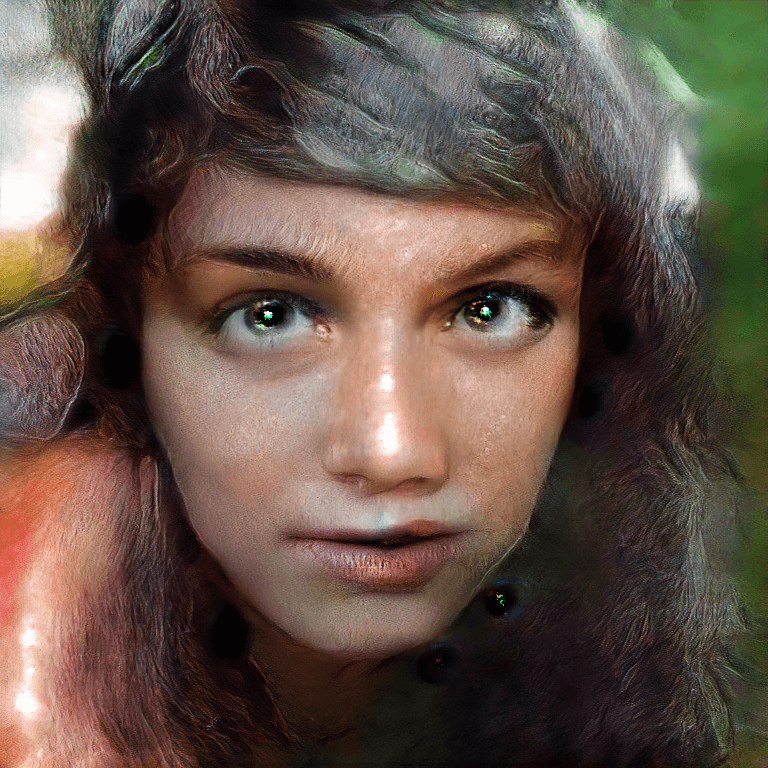
One of Mike Tyka’s Portraits of Imaginary People, Ars Electronica, 2017.
(Portraits of Imaginary People. Courtesy of Mike Tyka, 2017. http://www.miketyka.com/.)
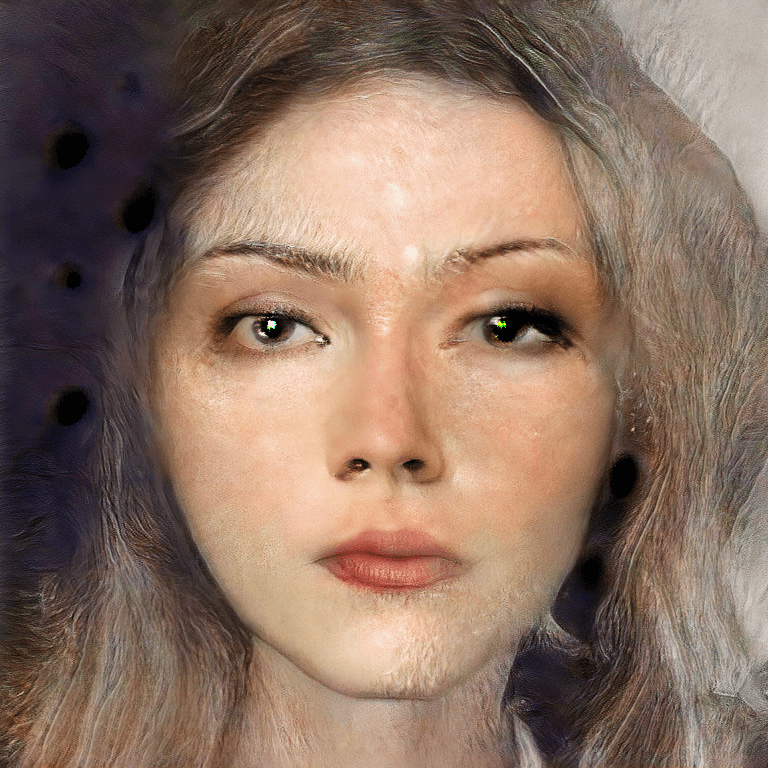
Another of Mike Tyka’s Portraits of Imaginary People, Ars Electronica, 2017.
(Portraits of Imaginary People. Courtesy of Mike Tyka, 2017. http://www.miketyka.com/)
Theresa Reimann-Dubbers’s AI Looks at the Messiah

Theresa Reimann- Dubbers, A(.I.) Messianic Window, 2017.
(A(.I.) Messianic Window. Color print on transparencies. Courtesy of Theresa Reimann- Dubbers, 2017.)
Jake Elwes’s Dreams of Latent Space
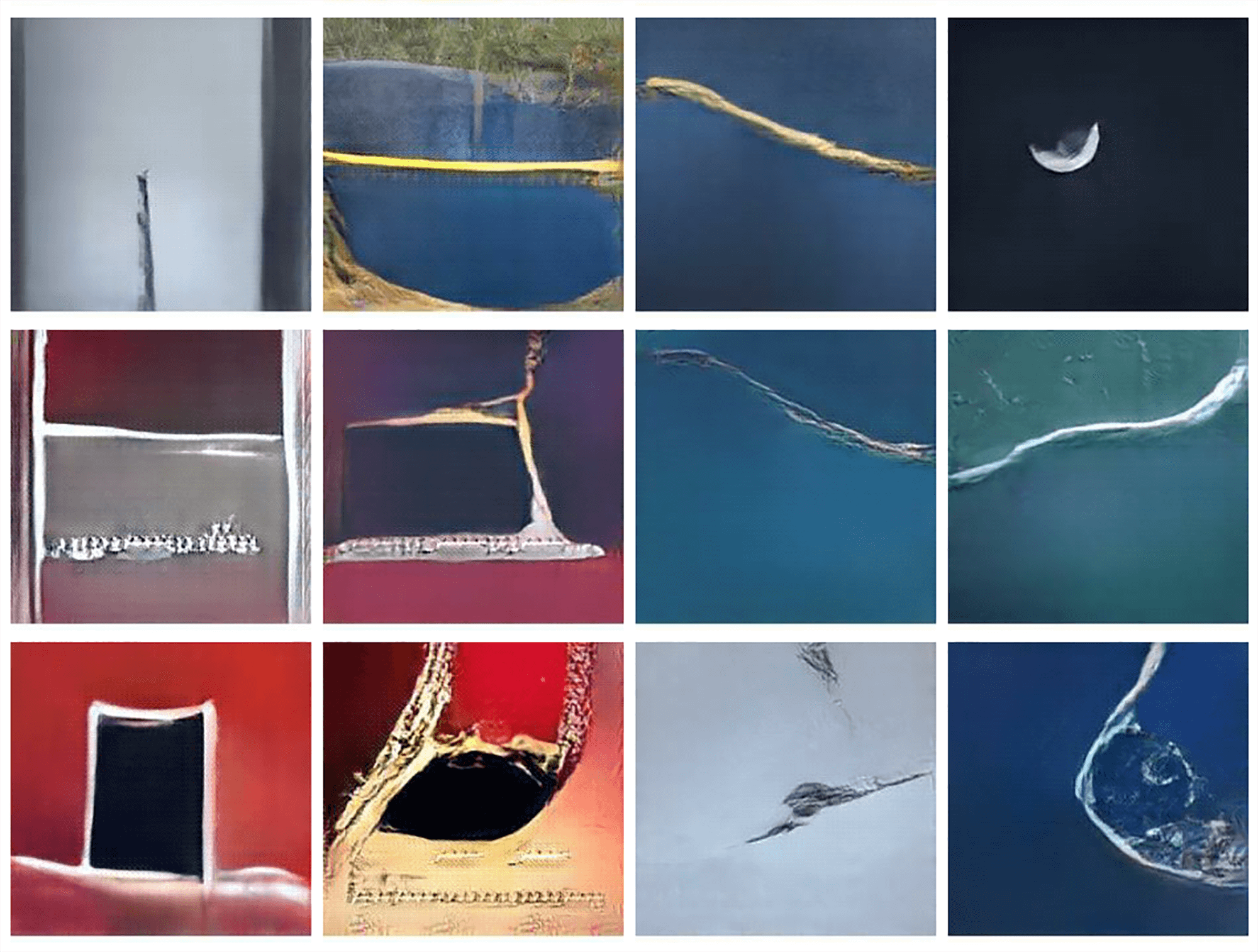
A machine dreams. Jake Elwes, Latent Space, 2017.
(Latent Space. Courtesy of Jake Elwes, 2017.)
Phillip Isola’s Pix2Pix: Filling in the Picture
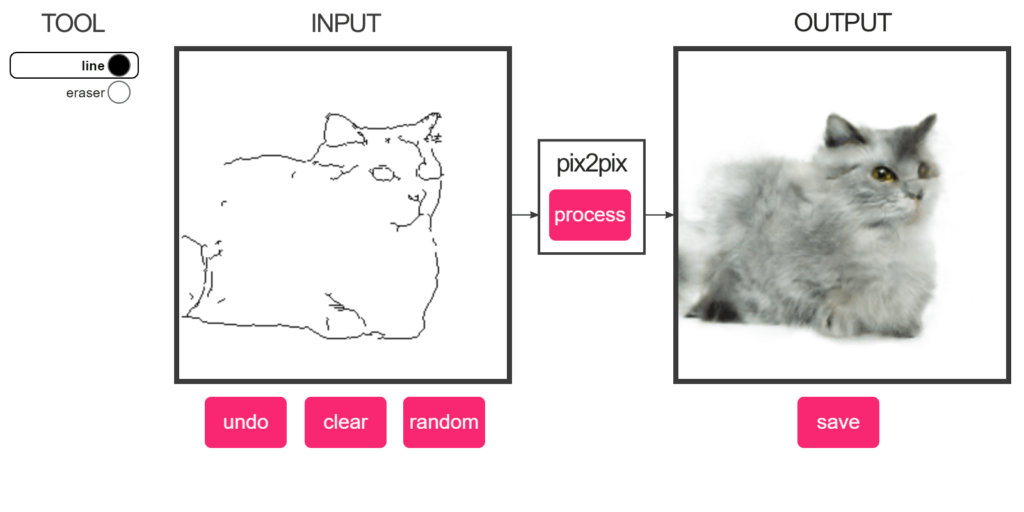
Chris Hesse, edges2cats, 2017.
(edges2cats. Courtesy of Chris Hesse, 2017.)
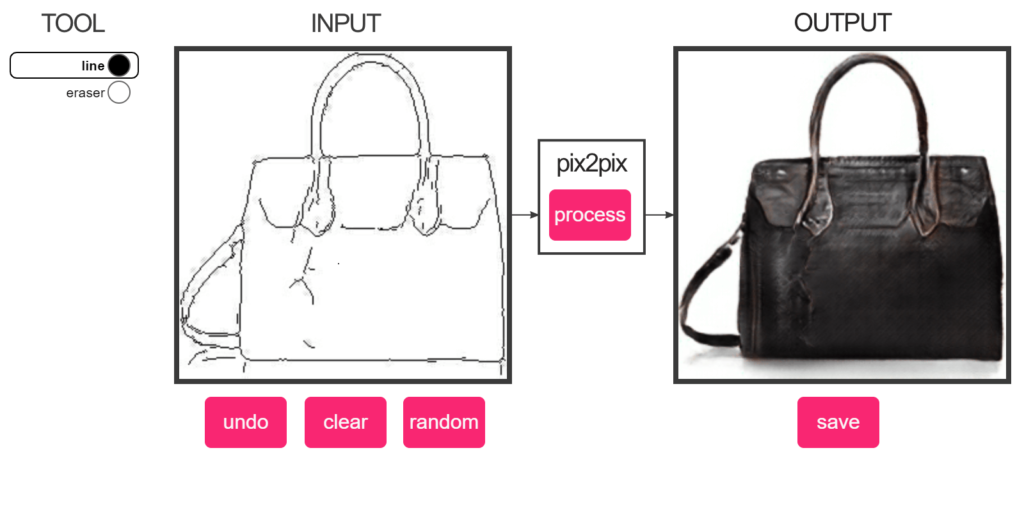
Chris Hesse, edges2handbags, 2017.
(edges2handbags. Courtesy of Chris Hesse, 2017.)
Mario Klingemann Changes Faces with Pix2Pix
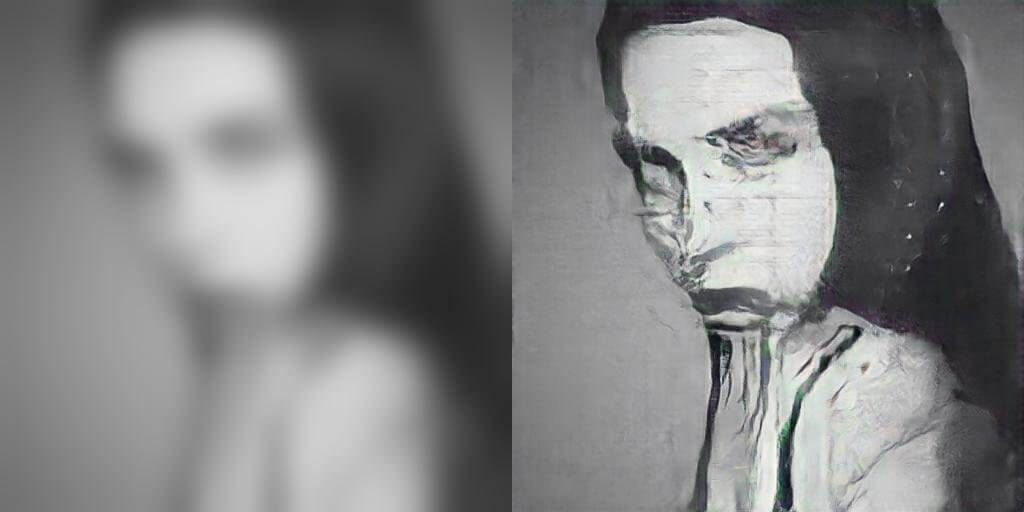
Mario Klingemann, Transhancement Sketch, 2017.
(Transhancement Sketch. Courtesy of Mario Klingemann, 2017.)
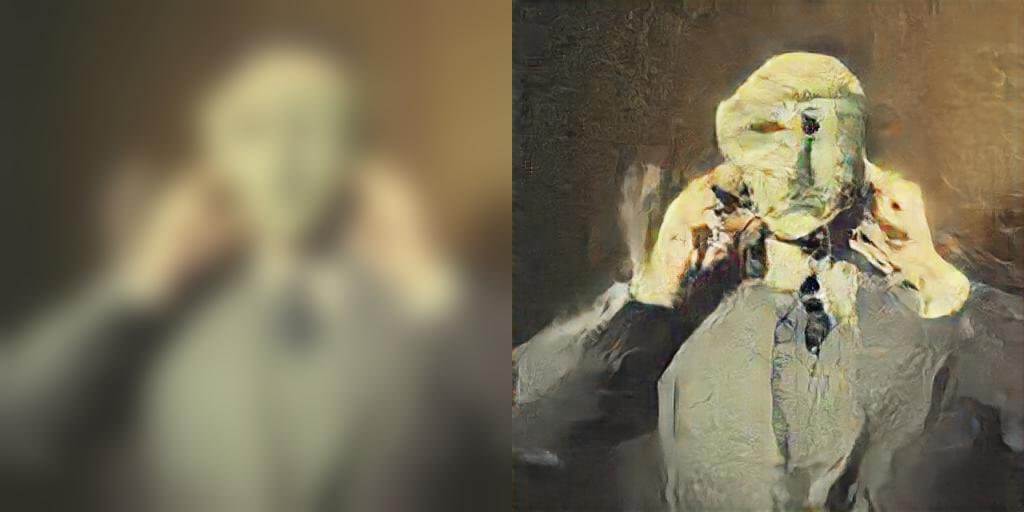
Mario Klingemann, Transhancement Sketch, 2017.
(Transhancement Sketch. Courtesy of Mario Klingemann, 2017.)
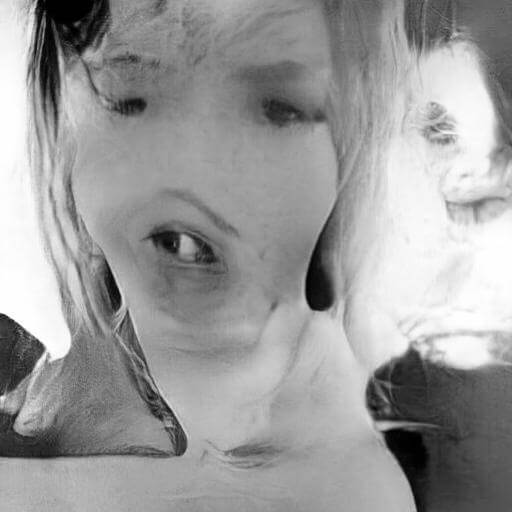
Mario Klingemann, Neurographic Self- Portrait, 2017.
(Neurographic Self-Portrait. Courtesy of Mario Klingemann, 2017.)
Jun-Yan Zhu’s CycleGAN Turns Horses into Zebras
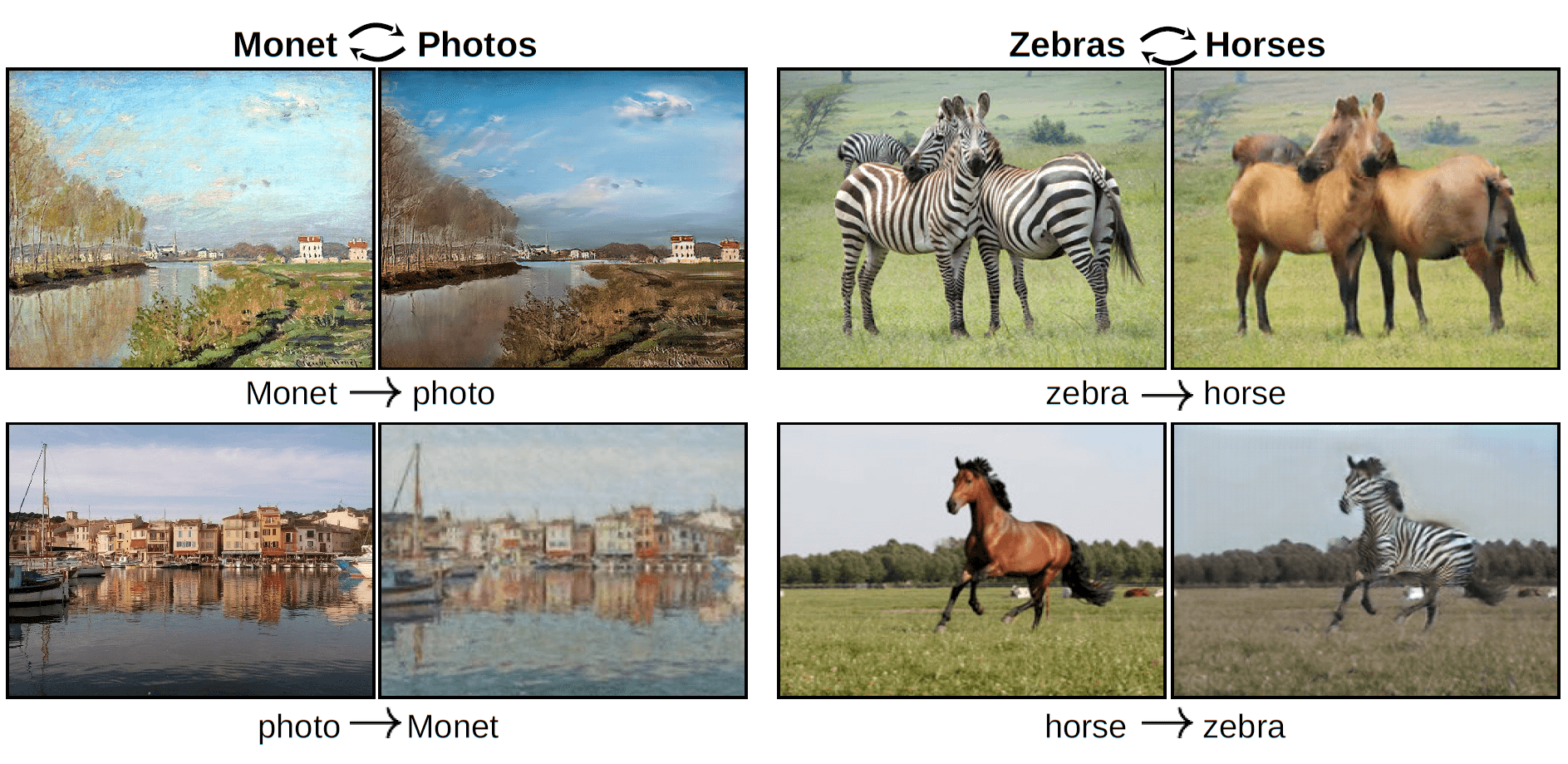
CycleGAN translates from a Monet to a photograph- like landscape (top, upper row) and from a photograph to a Monet- like painting (top, lower row), and from a zebra to a horse (bottom, upper row) and from a horse to a zebra (bottom, lower row).
(Courtesy of Jun- Yan Zhu, 2017.)
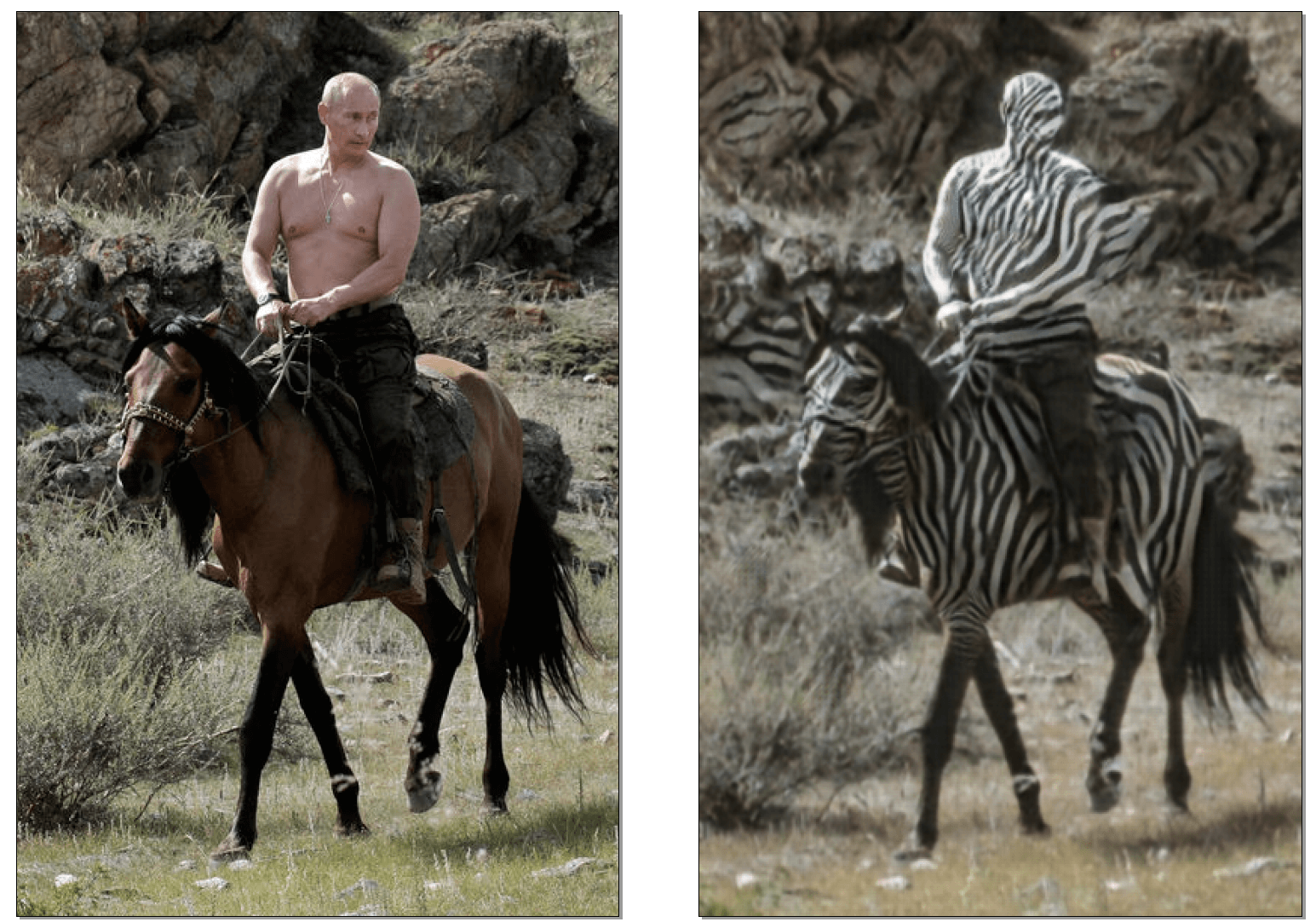
Striped Putin astride a zebra, created by Jun- Yan Zhu using a CycleGAN, 2017.
(Courtesy of Jun- Yan Zhu, 2017.)
Mario Klingemann Plays with CycleGAN
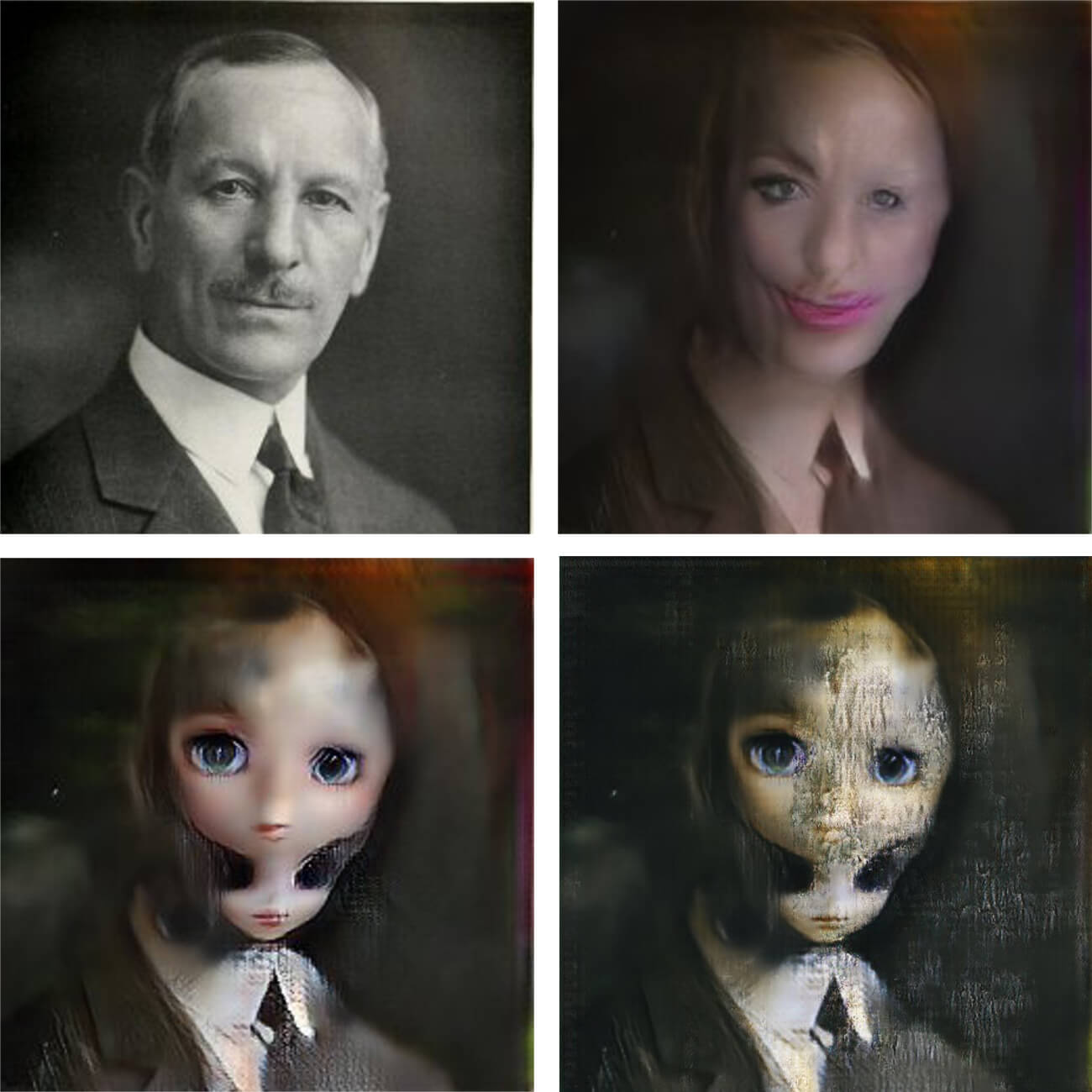
Mario Klingemann, computer- generated images created using Pix2Pix and CycleGAN. The original black- and- white photograph (upper left). The same photograph, processed by a CycleGAN trained on 1920s images of men and recent, colored selfies of women (upper right). Previous image, fed into a second CycleGAN trained to turn human faces into doll faces (lower left). The image in turn is processed by a Pix2Pix trained on “glitch images” to build in the element of decay, 2017 (lower right).
Ahmed Elgammal’s Creative Adversarial Networks
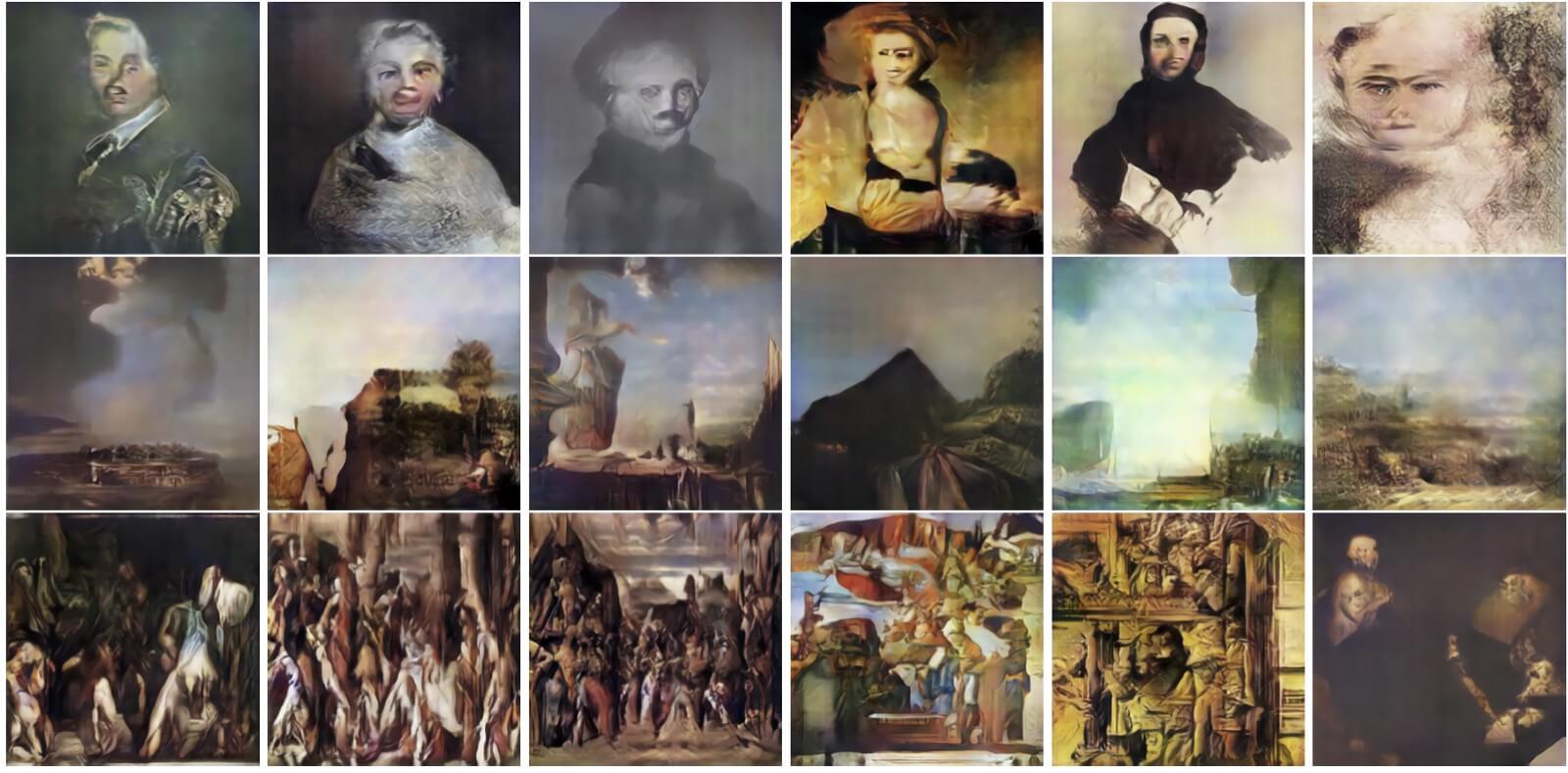
Images created by a CAN with the style ambiguity function turned off, 2017.
(Courtesy of AICAN— Ahmed Elgammal— Art and AI Lab, Rutgers, 2017.)
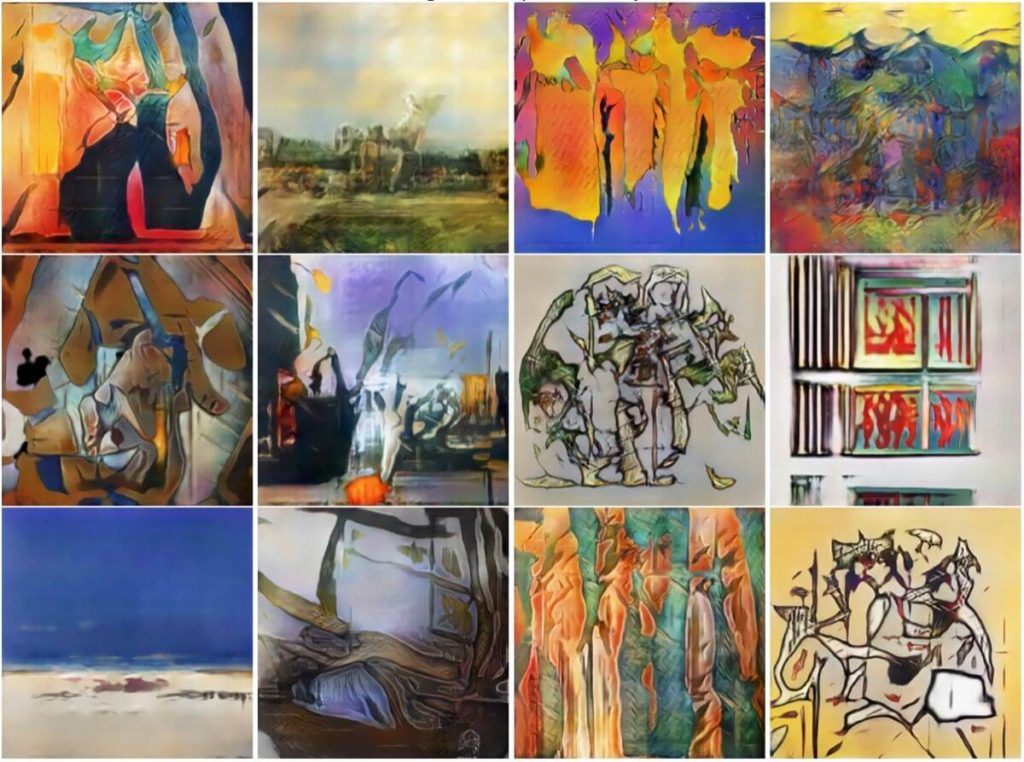
“But Is It Art?” GANS Enter the Art Market
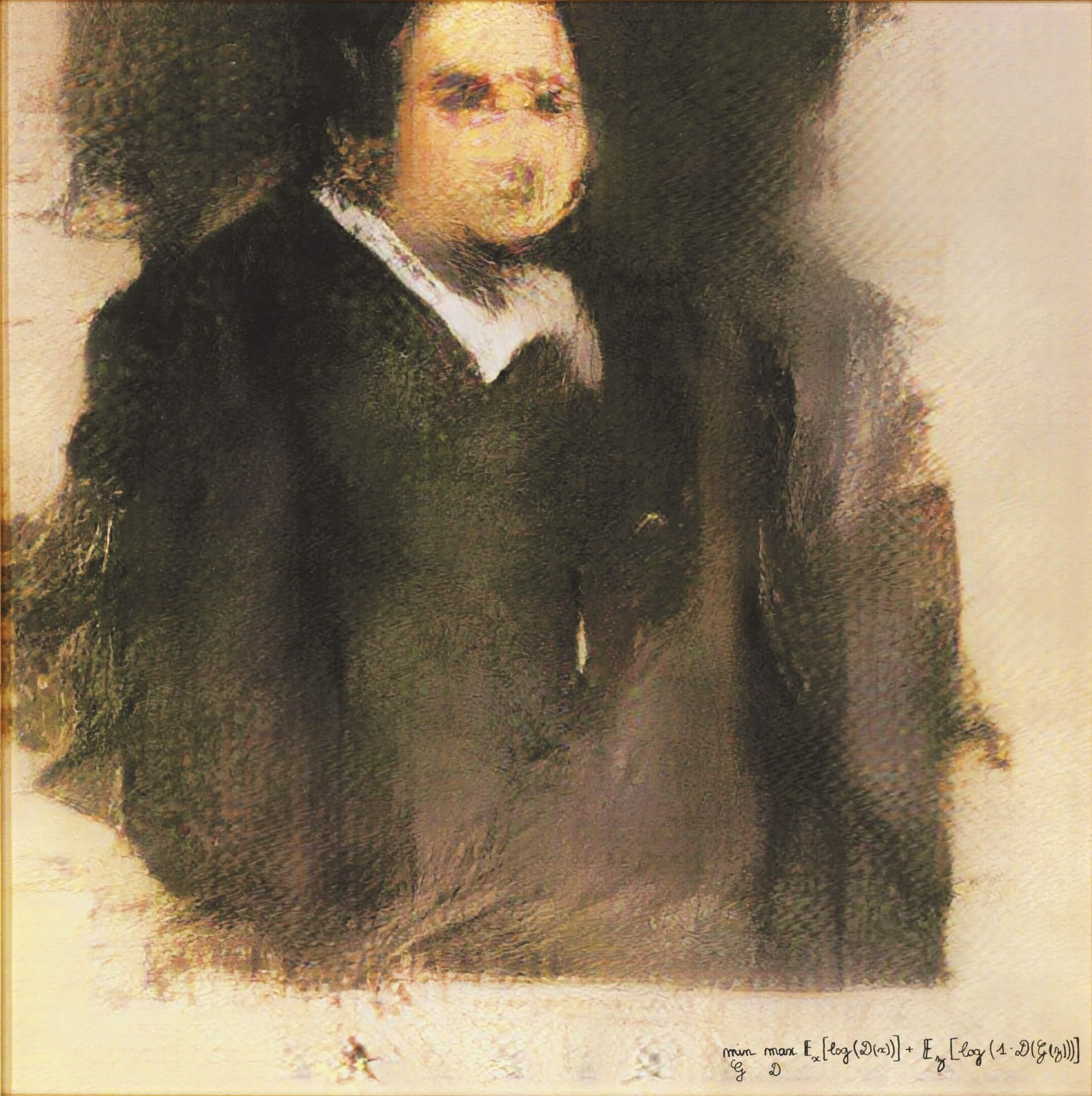
Portrait of Edmond de Belamy, 2018.
(Portrait of Edmond de Belamy. Courtesy of Obvious, 2018.)
Simon Colton’s The Painting Fool
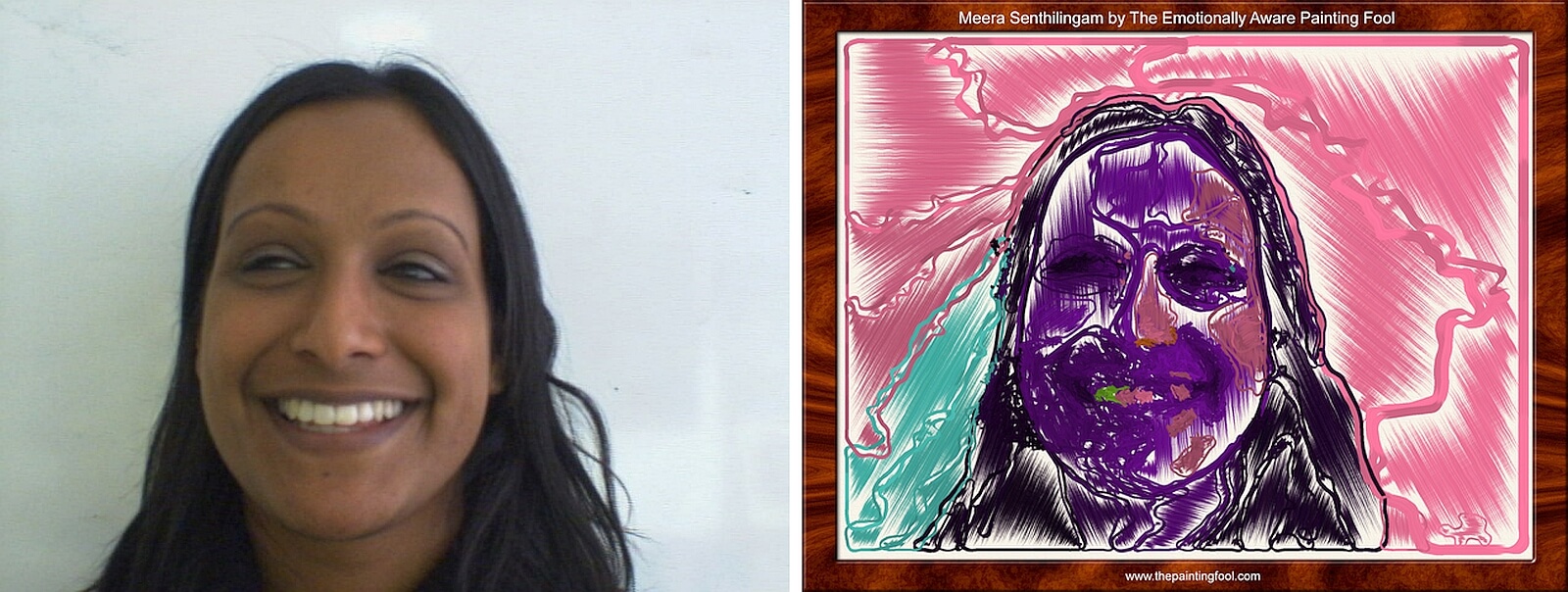
Happy face (left). As rendered by The Painting Fool, in vibrant pastels, with an “electric” background, 2015 (right).
(Emotionally Enhanced Portrait of Meera Senthilingam (Happy Face). Artist: The Painting Fool. Courtesy of The Painting Fool/Simon Colton, 2015.)
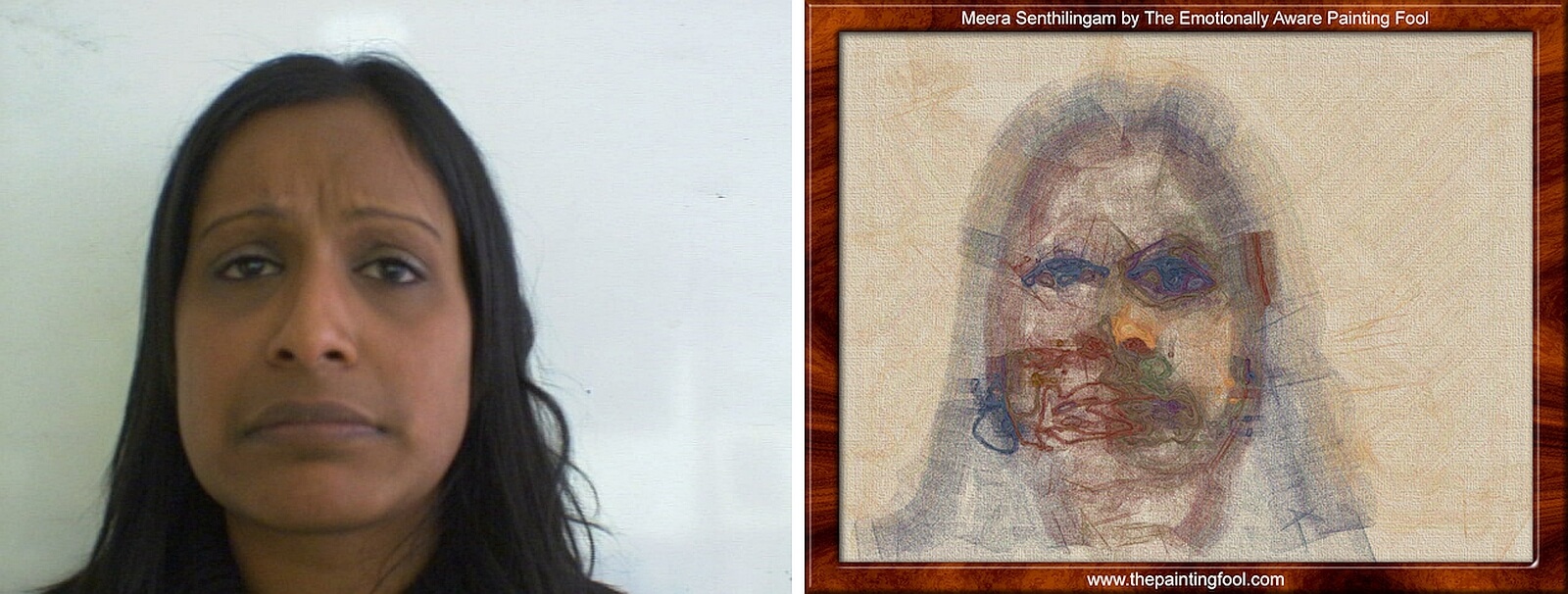
Sad face (left). As rendered by The Painting Fool, in muted colors, with a dull background, (right) 2015.
(Emotionally Enhanced Portrait of Meera Senthilingam (Sad Face). Artist: The Painting Fool. Courtesy of The Painting Fool/Simon Colton, 2015.)
Hod Lipson and Patrick Tresset’s Artist Robots
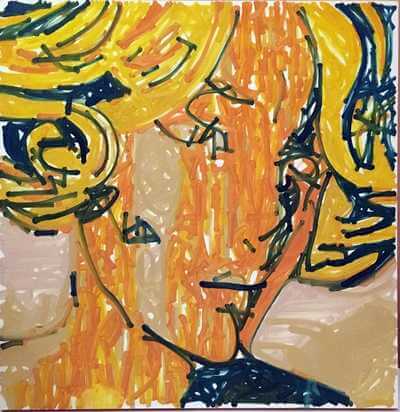
Tear, inspired by Roy Lichtenstein’s Frightened Girl. Lipson attributes the work to PIX18 and himself thus: PIX18/Hod Lipson, 2016.
(Tear, inspired by Roy Lichtenstein’s Frightened Girl. Artist: PIX18. Oil on canvas, 24 in. × 24 in. Courtesy of PIX18/Hod Lipson, 2016.)
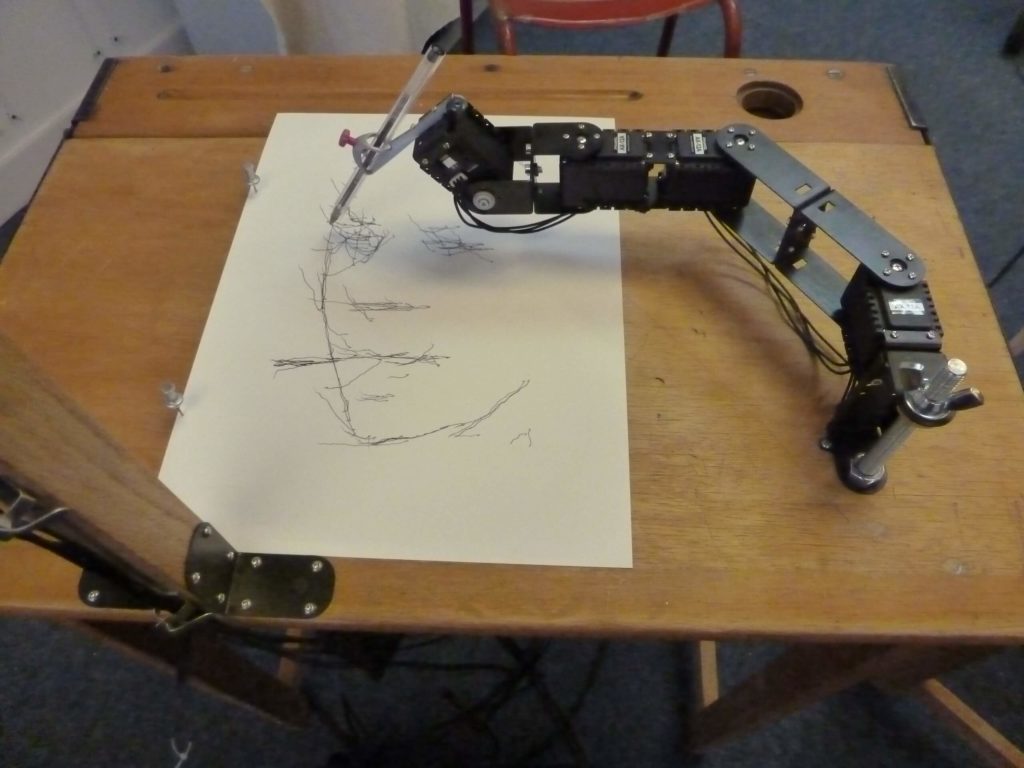
Partrick Tresset’s Painting Robot, Paul, sketching the author, 2017. (Photograph by the author, 2017.)
Part III
Machines That Make Music: Putting the “Rhythm” into “Algorithm”
Gil Weinberg and Mason Bretan and Their Robot Jazz Band
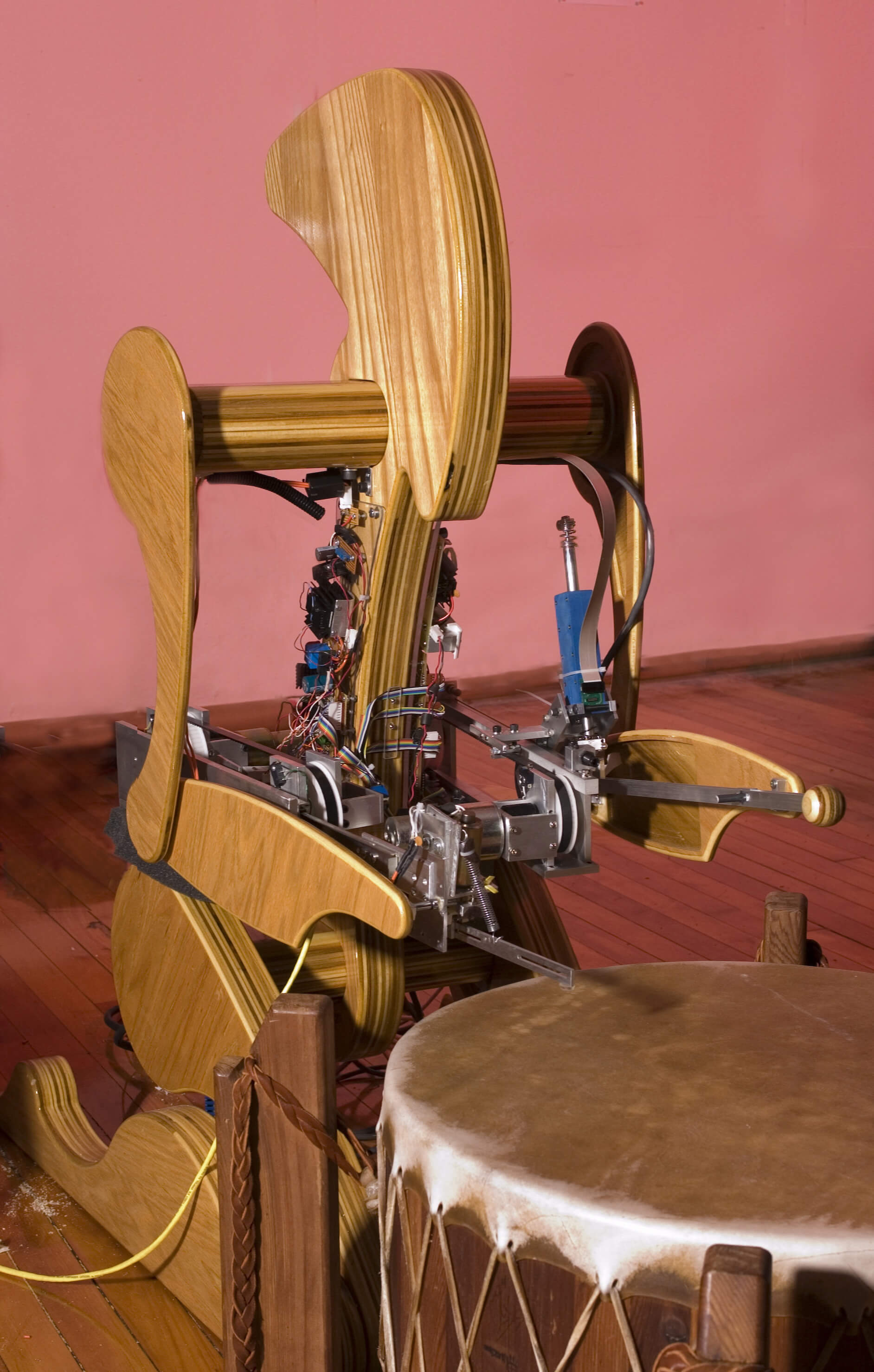
Haile, the drum- playing robot, 2006.
(Haile the drum- playing robot. Courtesy of Gil Weinberg, 2006.)
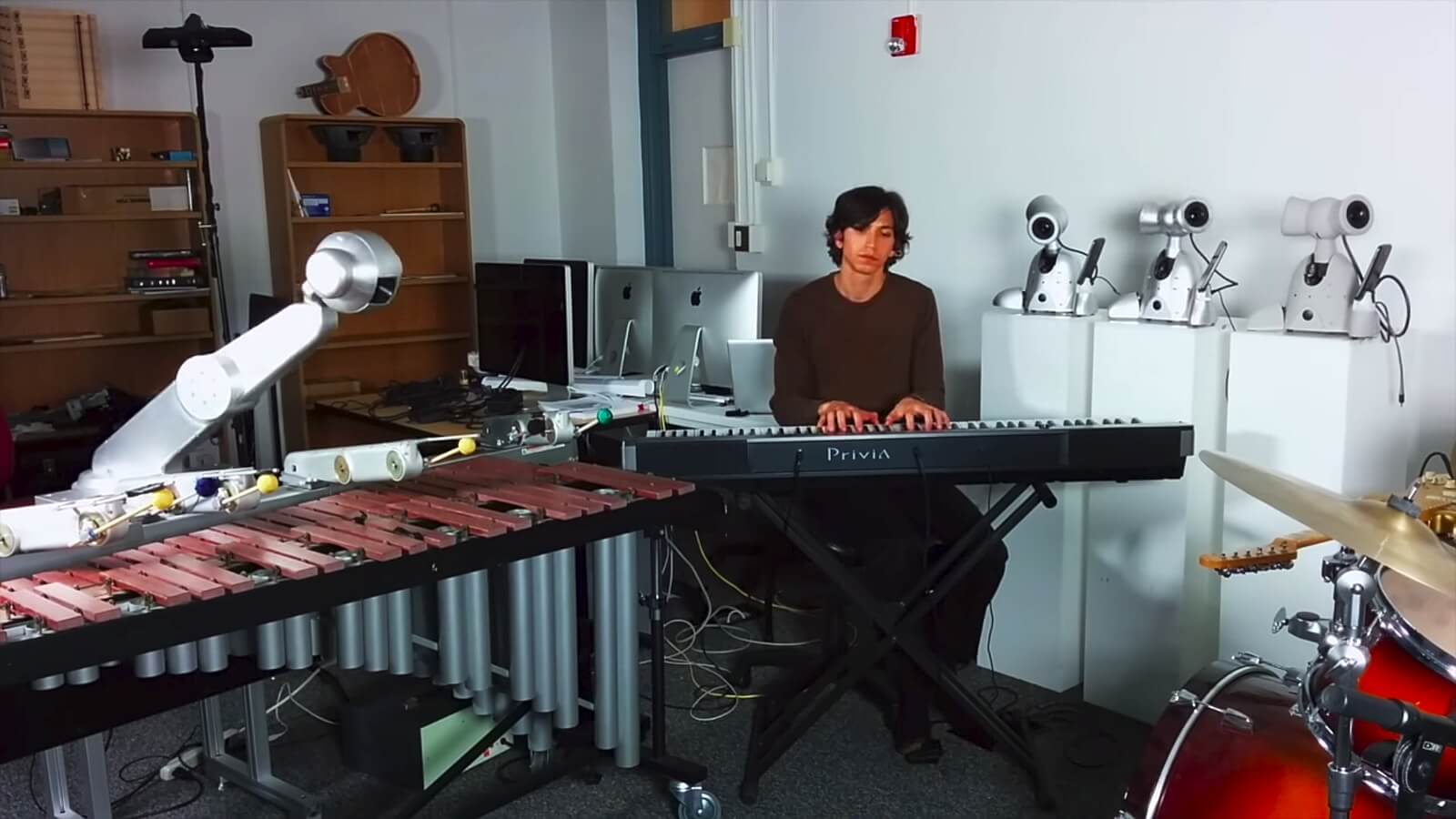
Mason Bretan jamming with Shimon (left) and three Shimis (right), 2015.
(Screenshot from Mason Bretan’s video “What You Say.” Courtesy of Mason Bretan, 2015.)